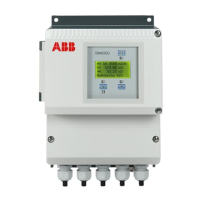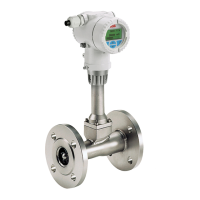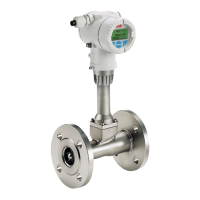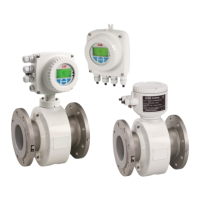FSM4000 ELECTROMAGNETIC FLOWMETER | OI/FSM4000-EN REV. E 41
Digital communication
HART® protocol
The device is registered with the HART Communication
Foundation.
Note
The HART® protocol is an unsecured protocol, as such the
intended application should be assessed to ensure that these
protocols are suitable before implementation.
Figure 38: HART communication
Software DAT200 Asset Vision Basic (+
HART-
FSK modulation on current output
4 ... 20 mA according to Bell 202 Standard
For additional information, see the separate interface
description.
System integration
In conjunction with the DTM (Device Type Manager) available for
the device (software version B.10 and higher), communication
(configuration, parameterization) can occur with the
corresponding framework applications according to FDT 1.21
(DAT200 Asset Vision Basic).
Other tool/system integrations (e.g., Emerson AMS/Siemens S7)
are available upon request.
A free of charge version of the DAT200 Asset Vision Basic
framework application for HART® or PROFIBUS is available upon
request.
The required DTMs are contained on the
DAT200 Asset Vision Basic DVD or in the DTM Library.
They can also be downloaded from www.abb.com/flow.
PROFIBUS PA protocol
The interface conforms to Profile 3.0 (PROFIBUS standard,
EN 50170, DIN 19245 [PRO91]).
Note
The PROFIBUS PA® protocol is an unsecured protocol, as such
the intended application should be assessed to ensure that
these protocols are suitable before implementation.
Segment coupler (incl. bus supply and termination)
Figure 39: Example for PROFIBUS PA connection
-
Software DAT200 Asset Vision Basic (+ PROFIBUS
PA-DTM)
Shielded, twisted cable (acc. to IEC 61158
-2, types
Bus topology
• Tree and / or line structure.
• Bus connection: Passive at both ends of the main bus line (RC
element R = 100 Ω, C = 1 µF).
Voltage / current consumption
• Mean current consumption: 10 mA.
• In the event of an error, the FDEfunction (= Fault
Disconnection Electronic) integrated in the device makes
sure that the current consumption cannot exceed a
maximum of 13 mA.
• The upper current limit is restricted electronically.
• The voltage on the bus line must lie in the range of
9 to 32 V DC
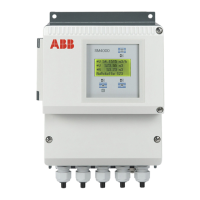
